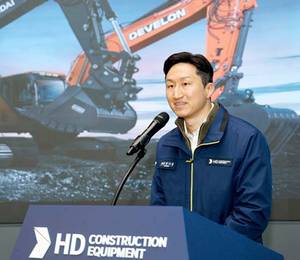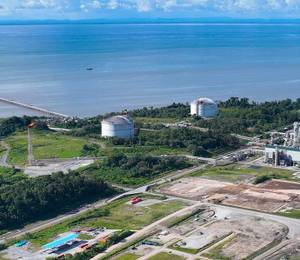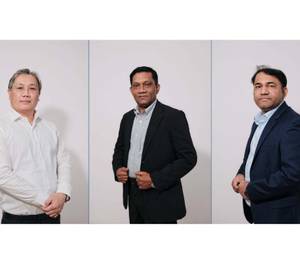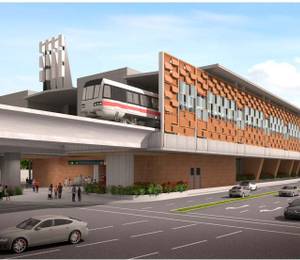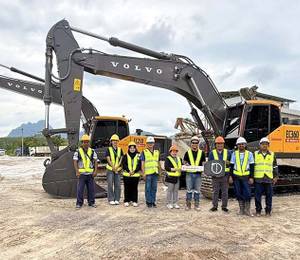The ASEAN Constructors Federation (ACF) Conference 2022 took place on 17 October in Kuala Lumpur, Malaysia. This year, the event was themed ‘Together shaping the future of construction in ASEAN’.
“After three long years since the last ACF council meeting in Bali [Indonesia], ACF finally had an in-person gathering – this time – in Kuala Lumpur. It was great to see familiar and new faces from the industry as the ASEAN region recovers by lifting Covid-19 restrictions,” said Sumit Oberoi, senior manager, industry strategist, APAC at Autodesk Construction Solutions.
“Over the last two years, the ASEAN construction industry has been challenged not just by the Covid-19 pandemic but also supply chain, skills shortages, and now inflationary pressure. It is critical for the ASEAN industry to find alignment with peers, particularly in construction policy, procurement, people management and embracing technological approaches – as this has now become the choice between adapting and thriving versus resisting and perishing,” explained Mr Oberoi.
“From the presentations and discussions at ACF Conference 2022, the general sentiment felt was the pandemic became the construction industry’s catalyst to embrace onboard digital construction or accelerate their digital transformation to deal with mounting challenges. These include labour shortages, as well as the rising costs of labour and building materials.
“These sentiments were echoed in a global survey conducted by Alix Partners on 3,000 CEOs and executives across all sectors of the economy. It found that 78% think adopting digital tools is critical to survival.”
Ir. Ahmad Asri Abdul Hamid, chief executive of the Construction Industry Development Board Malaysia (CIDB), referred to these post-pandemic difficulties as long Covid issues hampering the industry’s fast recovery.
Muhammad Khalil Shaiful Bahari, deputy director, group technology office at Boustead Projects Singapore, revealed that the company’s digital transformation journey started before the pandemic. It was the right timing as Boustead could continue working remotely and safely when Covid-19 impacted its business and projects. With much of Boustead’s data and processes already migrated to the cloud, everyone had access to the shared data, and the company could easily pivot from field execution, on-site inspections and virtual inspections verifying design and constructible efforts.
“Having a unified data platform on the cloud transformed our decision-making processes. We can build digital models, approve designs, track the progress of our projects, and communicate with project team members – all online,” said Mr Shaiful Bahari.
Why should the industry embrace digital construction?
According to William Low, head of Asia at Autodesk Construction Solutions, construction companies welcome support in improving ways to minimise their risk, remove operational inefficiencies, and ensure prompt payment not just for themselves but also for their subcontractors.
Mr Low pointed out that the cloud platform addresses the missing link between design, preconstruction and construction. Data and information captured during disparate activities must be connected with one another and available on site to facilitate effective business processes.
“The construction cloud division at Autodesk was formed to ensure that design is constructed on site according to what was approved. A comprehensive platform connects data from start to end – from design to construction and finally, handover. This data translates into important analytics that will help businesses to increase productivity, reduce costs and manage risks,” said Mr Low.
Karl Henderson, digital engineering lead, transport at Downer New Zealand, shared that the high number of paper plans outside of a common data environment can lead to lost revenue as precious time is wasted on finding the right documents. Embracing digital processes ensures that effort from each stakeholder can be leveraged accordingly. Further, embracing new technologies will also help raise the profile of the industry and attract new entrants towards a career pathway in digital construction.
Who should drive digital transformation?
Mr Oberoi moderated a VIP roundtable session with representatives from eight of the ASEAN Constructors Associations. This roundtable session provided insights into the framework required to improve the business environment for contractors such as adopting and developing digital construction. Many attendees echoed that government support is needed to strengthen approaches to digital reforms for the construction industry.
A representative from Singapore stressed that the government must implement policies that establish capabilities and technology methodologies that are applied to industry. A representative from Malaysia indicated that policies drive the construction section and act as a catalyst for delivery improvements. However, their value must be apparent for all players to adopt new forms of methodologies such as digital construction efforts.
A delegate from the Philippines touched on the partnership between the government, industry and academia in supporting practitioners with digitalisation. He shared insights from a student competition where the group was tasked to construct a miniature bridge. The students were paired with industry mentors who guided them in harnessing traditional constructability methodologies whilst utilising new digital tools for their project. This was a perfect way of improving knowledge when mentors could guide students on the actual challenges with construction efforts with the students then adapting the tools used to achieve the outcomes.
In addition, Mr Shaiful Bahari shared about Boustead Properties’ engagement workshops. He said that internally, organisations must engage their people and collaborators. Boustead applied both a top-down and an organic approach from the ground up. They also engaged their subcontractors to get them on board the company’s digital journey.
ACF chairperson Foo Chek Lee emphasised that construction companies need to lead the way in digital transformation as financial constraints hold local contractors back from adopting digitalisation.
Madhu Aravind K, project manager, construction division at ITC India added that subcontractors need support and the right framework to embrace digital tools. ITC ensured that there was clear and transparent communication with subcontractors to facilitate their usage of the tools instead of simply pushing them to purchase. ITC also endeavoured to demonstrate how its processes were improved first before encouraging its subcontractors or clients. This paved the way for the subcontractors to experience first-hand the efficiency and cost-saving benefits of working on a digital platform.
Mr Oberoi further highlighted, “As much as digital construction is the way forward for the industry, it needs the buy-in and participation of all stakeholders in the ecosystem, and from all levels within the organisation.” With that in mind, Mr Shaiful Bahari quoted an African proverb that best sums up the collaborative nature of the industry, “If you want to go fast, go alone. If you want to go far, go together.”
According to Mr Oberoi, a confidential report from the roundtable will be presented to the ACF leadership of the findings, including an action plan to work towards next year’s conference.


